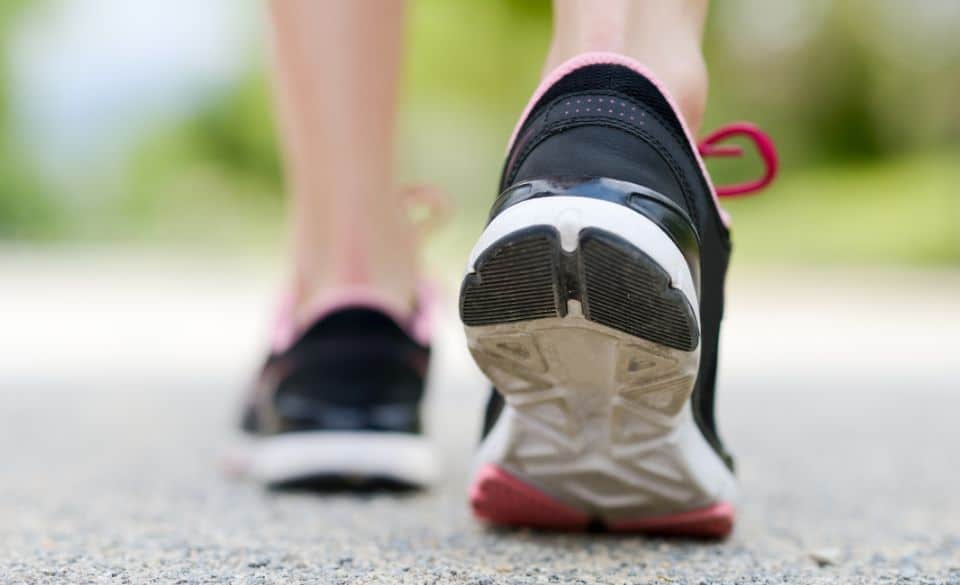
How to Avoid Hot Feet & Hot Spots While Running
Page Contents
Most runners have experienced hot feet or a burning sensation at some point during a run. This is to do with your feet naturally heating up. However, when the overheating starts causing you problems and interfering with your run, you need to do something about it.
In this article, we discuss what a hot spot is and why it can happen. We will also provide you with everything you need to know about treating and preventing hotspots.
So lets learn what is a hotspot is first.
What Is A Hotspot (Running)?
Running-induced Hotspots are usually a feeling of discomfort or pain located on the bottom of the foot. This feeling usually comes on after running for a long time and is defined as a pre-blister state.
If you find any areas on your feet that are reddish or painful during a run, it is most likely a hotspot. This area may also seem warm and saggy.
For most runners, hotspots occur on the big toe, heel, and ball of the foot. However, some people may find hotspots developing in other areas. Unfortunately, if left untreated, it may force you to alter your running style and even prevent you from training altogether.
While hotspots are common among runners, they are usually simple to treat.
What Causes Hotspots While Running
Running-induced Hotspots are generally a blister beginning to happen. When blisters occur from hot spots, they can become more painful than a blister and potentially prevent you from training for a few days.
The most common runner’s hotspot areas include the ball of the foot, behind the Achilles tendon, and at the base of the big toe.
Below are the top causes behind a hotspot forming in your feet while running.
– Wrong Running Shoes
– Tying shoes the wrong way
– Moisture inside of your Shoe
– Poor running technique
– Type of feet
Wrong Running Shoes
If you have purchased running shoes that fit incorrectly, you may find them causing hotspots when you run. This is more common in shoes that are too tight, as they don’t allow the feet to breathe. They may also irritate the toe area and cause a hot spot just under your metatarsal bone.
Even if you’re using the ideal shoes for your feet and gait, you can still form a hotspot if you do not lace your shoes properly.
Tying shoes the wrong way
Even though this is more uncommon, tying your shoelaces up too tight can limit the blood circulation around the feet and irritate the top of your feet. Alternatively, tying your shoes up too loose can end up causing heel slippage, which increases the amount of friction between your foot and shoe.
Moisture inside your shoes
When you are running many miles, sweat can start to build up around your feet. This creates a moist environment inside your running shoes, causing friction between your skin, socks, and feet, which can begin the development of a hotspot.
Poor running technique
If you run with an inefficient stride or with too much heel strike, it can put more strain on your feet, which causes the skin to overstretch. This can then lead to a hotspot forming.
Type of feet
The type of feet you have can also make you more susceptible to hotspot formation. This is particularly common with runners who have high arches, as high arch feet tend to be very flexible, which can cause the skin on the bottom of the foot to stretch too much. It can also place more pressure on the arch, which can contribute to hotpots while running. While runners with high arches are generally more susceptible to hotspots, having flat feet can also cause hotspots.
How To Prevent Hotspots While Running
The best way to prevent hotspots while running is to wear the correct width and length of the shoe for your running style (pronation, neutral, supination, etc.). It is then recommended to pair them with a pair of socks that breathe well and are comfortable while running.
If you have flat feet or overpronate, try using an orthotic inner sole. This will help to help support your arch while running and help your shoes fit you better. It is also important that you make sure your shoes are free from moisture and sweat by allowing them to dry fully before running in them.
Check to make sure your laces aren’t too loose or overtight, and if you are a heavy heel striker or have a poor running gait, book in to have your running style analysed. From there you can start to slowly make changes to your technique that may help prevent hotspots from developing during a run.



